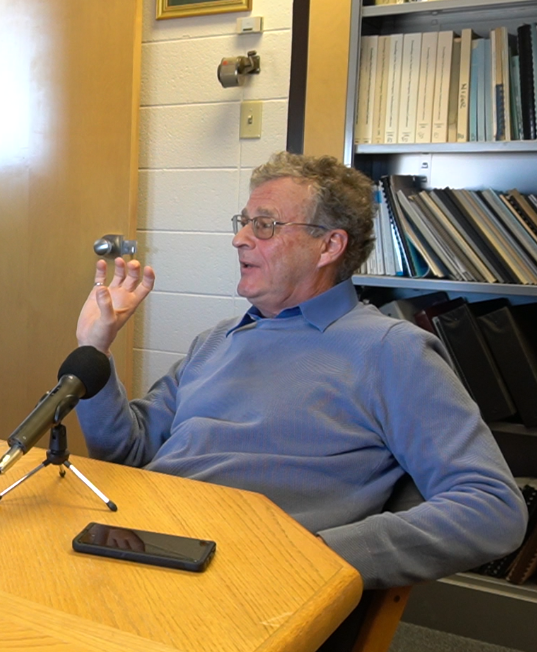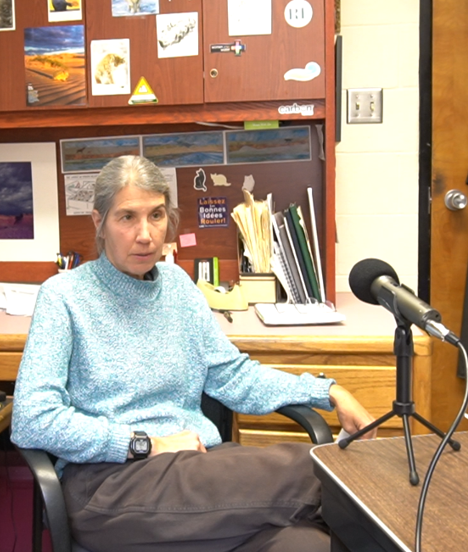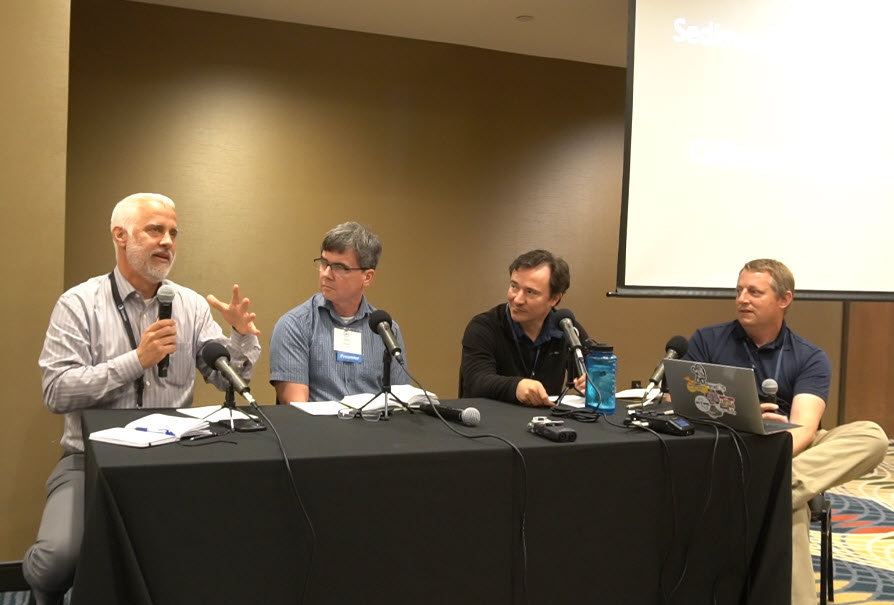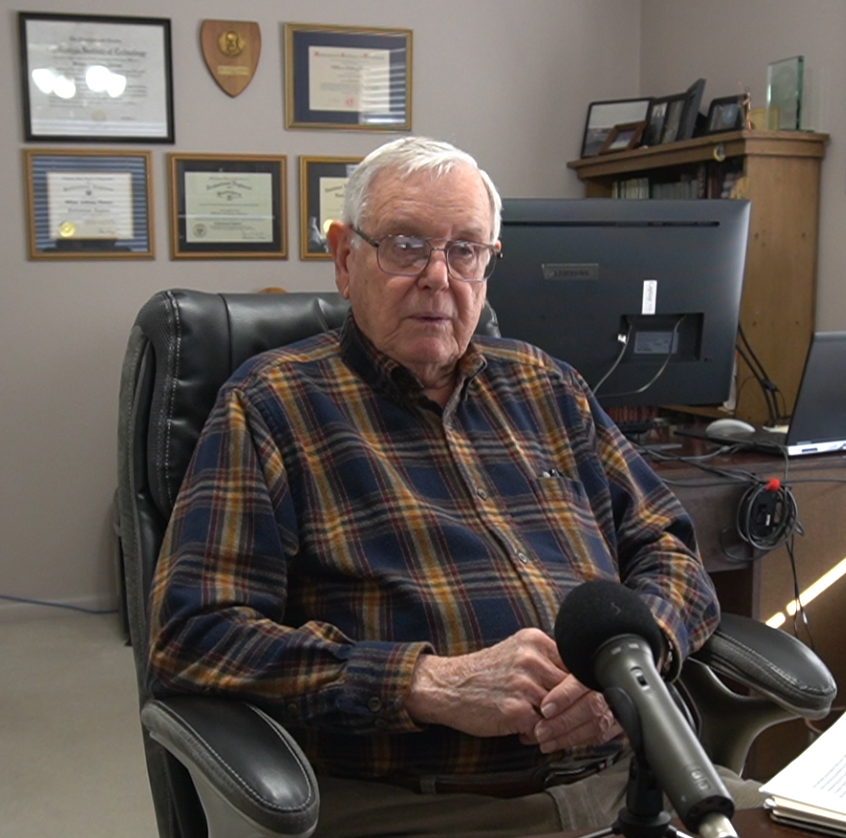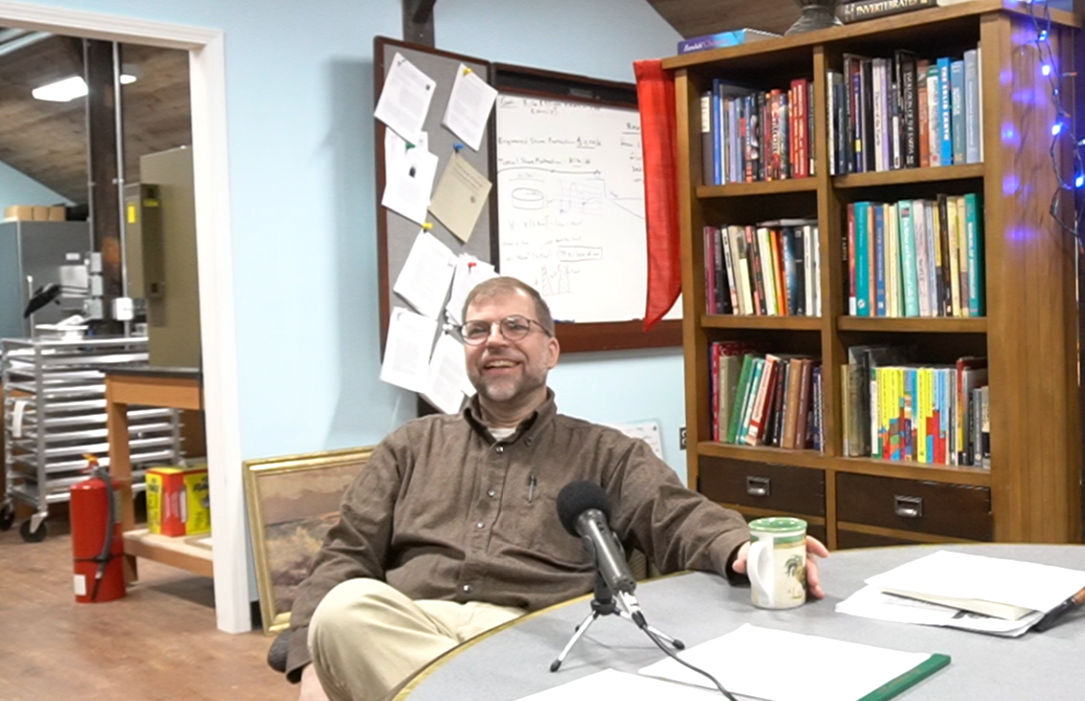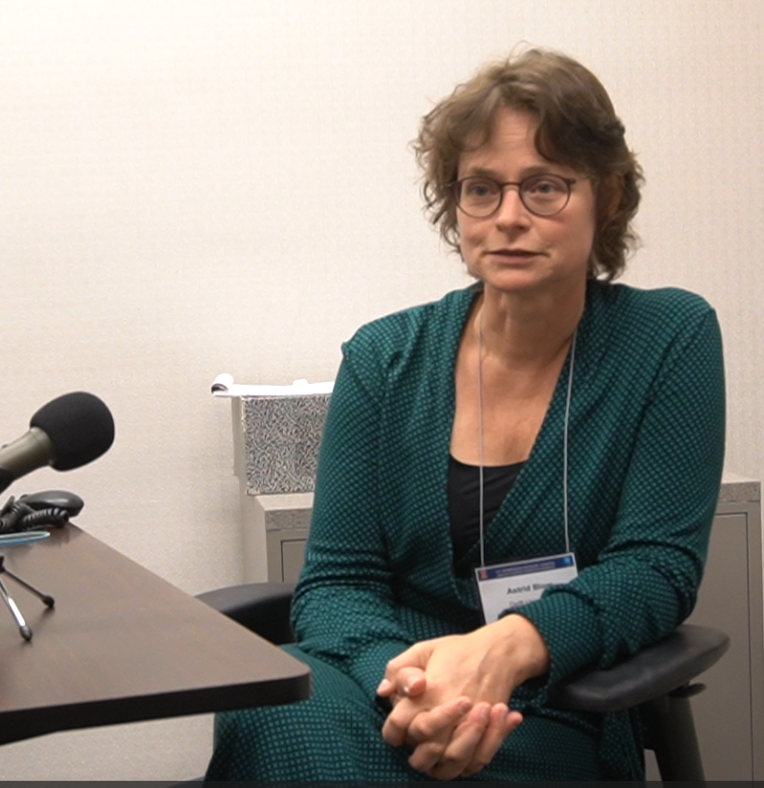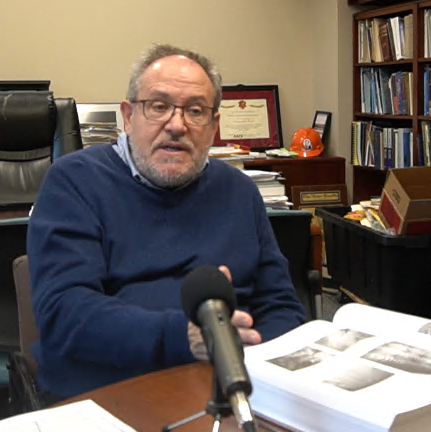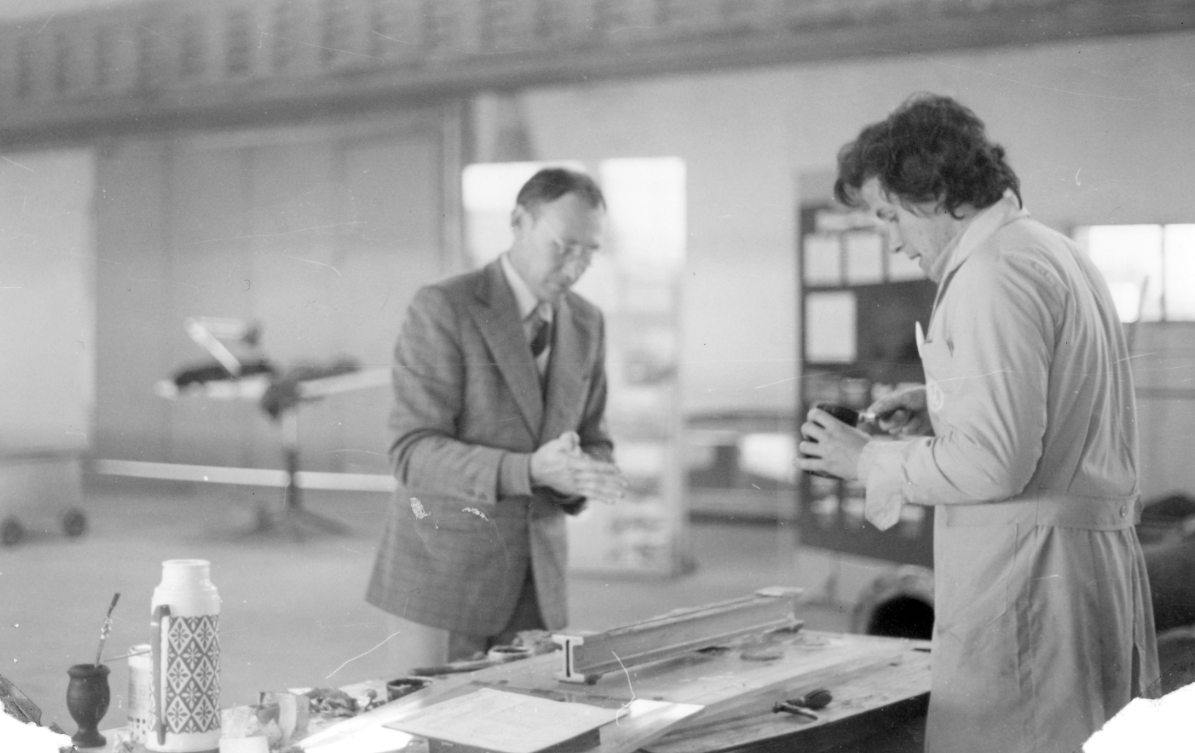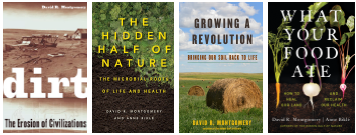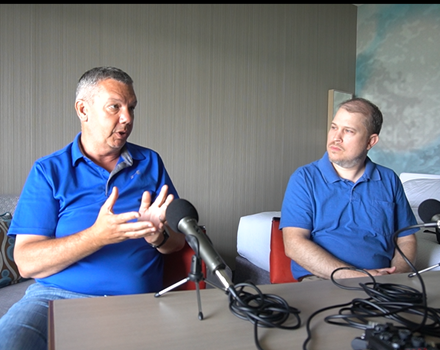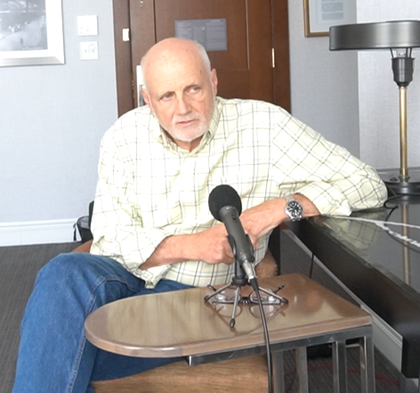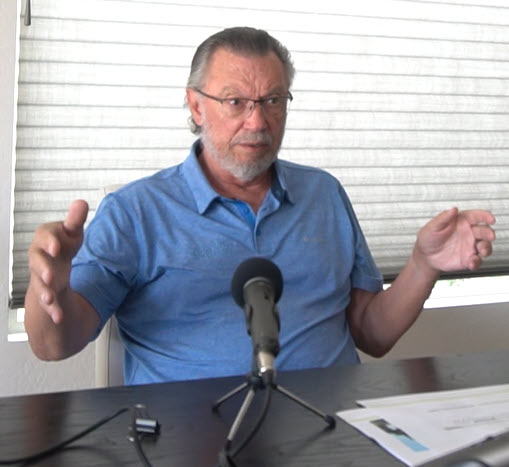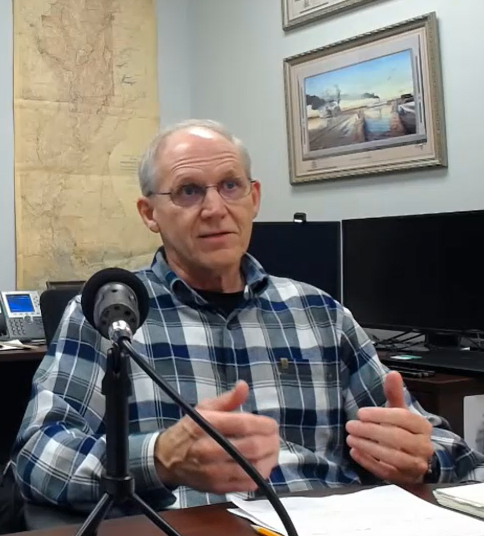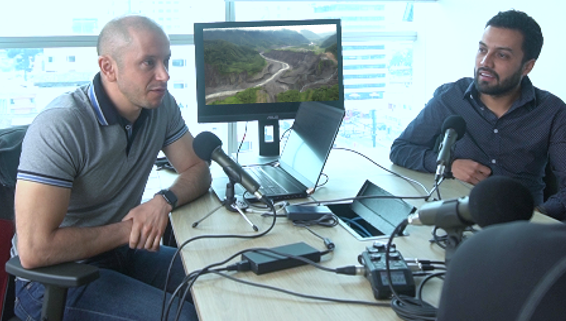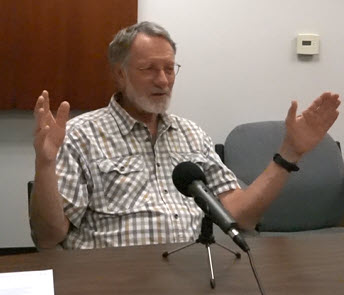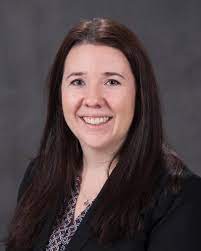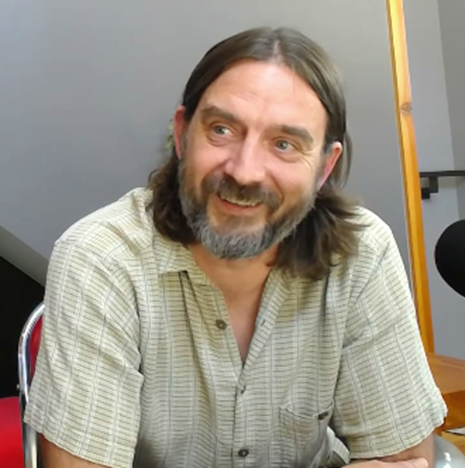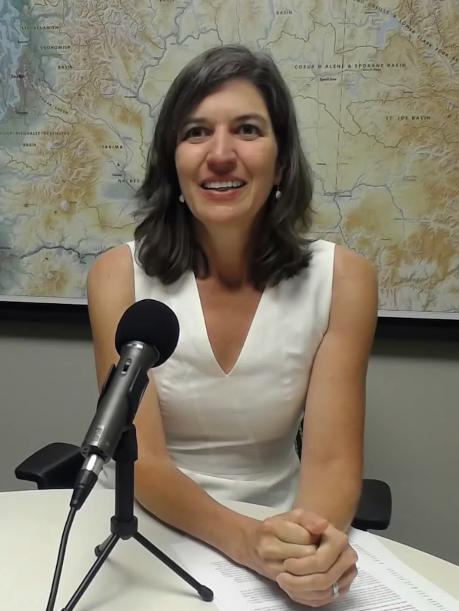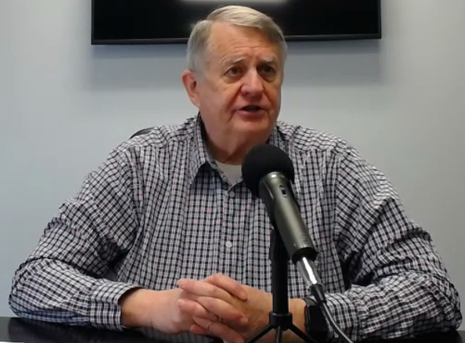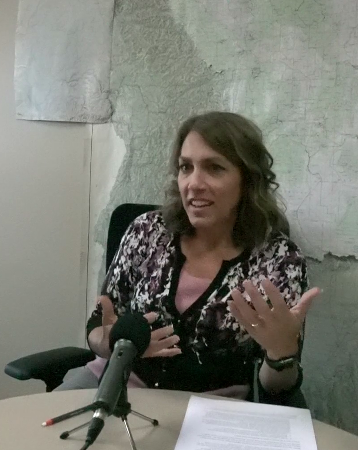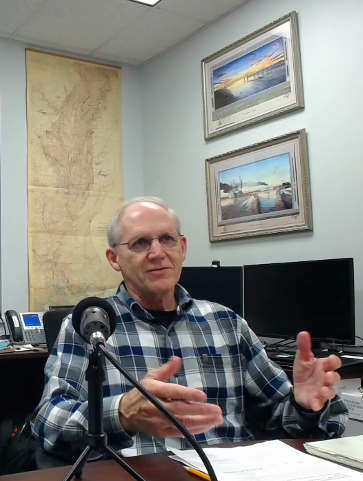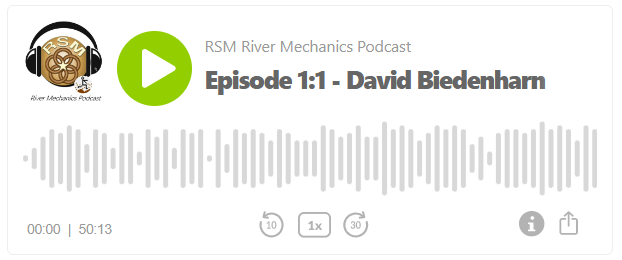Download PDF
Download page The RSM River Mechanics Podcast.
The RSM River Mechanics Podcast
Conversations about sediment transport, river mechanics, and fluvial geomorphology.
Presented by the USACE Regional Sediment Management R&D Program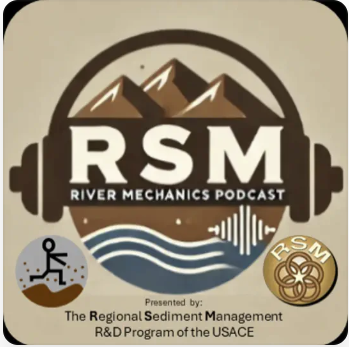
Subscribe on any podcast app, including:![]() Apple Podcast Link Spotify Link
Apple Podcast Link Spotify Link
You can offer guest recommendations or podcast feedback here: https://forms.gle/wWJLVSEYe7S8Cd248
Season 4 | |
Episode 4:3 Rob Ettema on River Ice, Ice-Sediment Interactions, and Sediment Biographies | |
| Dr. Rob Ettema taught Civil Engineering at the Universities of Colorado, Wyoming, and Iowa for 45 years. He recently retired as the Harold H. Short Endowed Chair in Infrastructure at Colorado State, where he's been instrumental at the Hydraulic Research Station and continues as a Senior Research Scientist. Dr. Ettema has been the Editor and Chief of the ASCE Cold Regions journal and won both the Rouse and Einstein awards (which also happen to be two of the science biographies he's written). Dr. Ettema is not only an expert in ice and sediment but is the go-to researcher on their interactions. So we talked about the surprising range ice effects on river transport and morphology. But he has also written biographies of some of the important figures in river mechanics history, so we saved some time to hear those stories. |
Dr. Ettema taught a short course with Dr. Julien that we were able to post. These lectures go deeper into ice and ice-sediment effects that we discussed in the episode, and also his work on scour and interactions between sediment and hydraulic structures that we did not discuss much. See links below | |
Bonus Content: USBR/CSU Short Course with Dr. Julien and Dr. Ettema | |
Dr. Pierre Julien Dr. Rob Ettema Lecture 1a: Incipient Motion and Sediment Eng. Lecture 2: Ice-Sediment Interactions | |
Episode 4:2 Pierre Julien on Bed Forms, High Concentration Flow, and Engineering Rules of Thumb | |
|
He is well known for theoretical advancements in fluid mechanics, sediment transport, bedform dynamics, and mud flow physics. But Dr. Julien also has a knack for isolating memorable mental approximations that help practitioners simplify problems and form hypotheses without their models or computers. |
Research Website | |
Episode 4:1 Ellen Wohl on World Rivers, River Restoration, and the Dimensions of Fluvial Connectivity | |
| Dr. Ellen Wohl is a Fluvial Geomorphologist at Colorado State’s Warner College of Natural Resources. As we will discuss, she has explored and studied rivers on 6 continents (so far) but has also focused on river processes in the Colorado front range for more than 20 years, turning up important insights from both these scales. In addition to many, many, peer review papers Dr. Wohl has also published more than a dozen books. While we did not get close to covering all of her work, we managed to talk about a wide range of topics including large river processes, the flood pulse model, the history and current state of restoration research and practice, and a big idea we haven’t interacted with much on this podcast yet: fluvial connectivity. |
This link is good entry point to Dr. Wohl's work: https://sites.warnercnr.colostate.edu/ellenwohl/ | |
Bonus Episode: Ask an Editor with Amy East | |
|
|
Season 3 | |
Episode 3:10 Peter Wilcock on Gravel Bed Rivers, Partial Transport, Armor Layer Persistence and Channel Design (Plus Wilcock & Crowe) | |
|
We talk about a wide swath of this paradigm shifting work, as well as the Wilcock and Crowe sediment transport function. We also talk about some of Peter's more recent work on restoration channel design. |
The Link to Peter's Stream Assessment and Design Class Materials (including iSURF) that we talked about is here: https://qcnr.usu.edu/wats/programs/short-courses/sediment-transport/course-materials-2022 | |
Episode 3:9 Mary Power on River Ecology, Disturbance, and Inverted Pyramids | |
|
Dr. Power has also uncovered multiple eco-geomorphic stories of interactions between river mechanics processes and aquatic communities in a wide variety of clear-water rivers. We talked about some of those findings, as well as a wide range of river ecology models that help us think about how some of river mechanics processes we talk about in this podcast, interact with the communities these systems support. |
Links: | |
Episode 3:8 Alain Recking on Sediment Sorting, Transport, and Relative Roughness in Mountain Rivers | |
|
We talked about grain sorting in mountain rivers and his flume experiments that demonstrate cycles of armor formation and deformation during constant flows. We also talked about the importance of relative roughness in high gradient rivers and gravel bed sediment transport function that he developed that corrects for overestimation in earlier equations. |
Bedload Web: https://en.bedloadweb.com | |
Episode 3:7 Sediment Modeling Failure Modes and Best Practices with Four Model Developers | |
|
We discussed pre-modeling practices we all share, calibration, common modeling failure modes and best practices, and thoughts on alternative evaluation. I wish something like this existed when I was starting out but I'm glad it does now. |
The conference paper associated with this panel discussion is here: https://www.sedhyd.org/2023Program/1/157.pdf | |
Episode 3:6 Tony Thomas on the History of Sediment Modeling and Insights from More than 55 Years of Sediment Analysis | |
|
We talked to him about those initial days of sediment modeling, some of the most sensitive sediment processes he identified over a 50+ modeling career, and some of the things he learned from decades of exploring rivers quantitatively. |
Episode 3:5 Jim Selegean and the Classic Paper Draft | |
|
I also don't know anyone in my agency with quite the grasp of the classic hydraulic and river mechanics literature as Jim. So Jim and I collaborated on something of a literature primmer episode, but in a competitive draft format. Welcome to the RSM River Mechanics, Classic Paper Draft. |
Foundations of Ecology Text | |
Episode 3:4 Astrid Blom on Incision on the Rhine, Gravel-Sand Transitions, and Vertical Bedform Sorting | |
Dr Astrid Blom is a professor at the Delft University of Technology where she teaches River Mechanics and River Processes. Most of Dr. Blom's recent work focuses on actionable, river and reach scale modeling... of the Dutch portion of the Rhine to evaluate long term impacts of human interventions and climate change. But her literature also includes investigations of river processes, novel navigation technology, and laboratory scale sediment sorting. In this episode, we talked to Dr. Blom about her work on each of those scales. | |
Links to the publications we discussed: | |
Episode 3:3 Marcelo Garcia (Part 2) on Sedimentation Hazards, the Bulle Effect, and Transport Paradigms | |
|
|
Videos below include an excerpt from the podcast with footage from the Iruya debris flows and the first talk in Dr. Garcia's Sedimentation Hazard class. | |
Episode 3:2 Marcelo Garcia Shares Some Sediment Stories and Discusses Manual of Practice 110 | |
Episode here | Dr. Marcello Garcia holds an endowed chair in Hydraulics at the University of Illinois-Urbana – where he has taught for more than thirty years, and runs the remarkable Ven Te Chow hydraulic and sediment laboratory. His award page reads like a who’s-who of the Legends in our field including the Einstein, Rouse, and Yalin lifetime awards, and he is a Distinguished member of the American Society of Civil Engineers and the an elected fellow of the American Geophysical Union. When the American Society of Civil Engineers decided to redo their sedimentation manual of practice, they turned to Dr. Garcia to lead this massive, 10-year project. We talked to him about a wide range of ideas and stories surrounding that project. |
The ASCE Manual of Practice is here: https://ascelibrary.org/doi/10.1061/40856%28200%2994 | |
| |
Episode 3:1 David Montgomery on High Gradient River Mechanics and Sediment Impacts on Human History | |
Dr. David Montgomery is a geomorphologist at the University of Washington, in the department of Earth and Space Sciences (and a 2008 McArthur Fellow) where he has published several neo-classic works on high-gradient river morphology and transport. But he has also written six popular narrative non-fiction books in the intersection between soil/sediment science and human history/policy, books like Dirt, The Hidden Half of Nature, and What Your Food Ate. | |
Check out Dr. Montgomery's Books: | |
Season 3 Preview | |
| |
Season 2: Mini-Season on Reservoir Sediment Management | |
Episode 2:4 Jennifer Bountry on Dam Removal | |
| |
The Dam Removal Analysis Guidelines for Sediment are here. | |
Episode 2:3 Paul Boyd and John Shelley on Reservoir Sediment Management in the United States | |
Dr. Paul Boyd and Dr. John Shelley are involved in more reservoir sediment management initiative in the United States than anyone I know. Dr. Boyd and Dr. Shelley are the regional technical specialists for sediment transport on the Missouri River watershed (Paul in the Omaha District and John in Kansas City) and the Corps' national subject matter experts on reservoir sediment management. I wanted to dedicate an episode to check in on these practices in my country, and talk about the "nascent" (as Dr. Morris described it) but growing momentum behind sediment sustainability in the United States. | |
The paper we talk about at the end of the conversation can be found here: Gibson and Boyd's (2016) Paper on monitoring and modeling the spencer dam flush is: here | |
| |
Episode 2:2 Greg Morris on Reservoir Sediment Management Approaches | |
Dr. Greg Morris wrote the first text on reservoir sediment management, which generated the categories and set the parameters for a lot of the work and conversations surrounding the topic in the last three decades. Most of us who work in this field got our start with his Reservoir Sedimentation Handbook. But he has also likely worked on more reservoirs with sedimentation issues - in more settings - than anyone else and has an uncommon reservoir of practical - on the ground - wisdom to offer. We got into the details, pros and cons, and case studies of the different reservoir management alternatives from his experiences around the world. | |
You can download a pdf of Dr. Morris' Reservoir Sedimentation Handbook and several other reports and publications here: www.reservoirsedimentation.com | |
Episode 2:1 George Annandale on Reservoir Sediment Management Motivation and Methods | |
Dr. George Annandale has been advocating for our future global water supply for decades...which is more connected to sedimentation processes than you might imagine. In his book, Quenching the Thirst he makes the case that reservoir sedimentation is one of the major challenges to water supply resilience worldwide and managing sediment at new and existing projects is a critical component of sustainable development. Dr. Annandale has worked on multiple projects at various scales, both as a consultant and for the World Bank. We talked about how reservoir sediment processes impact global water supply, the economics behind these trends, and the options available to mitigate these impacts. He also describes some of the work he has done on the Mekong River, including the innovative design of Sambor Dam. | |
Links to Dr. Annandale's books Quenching the Thirst and Scour Technology | |
Season 2 Trailer | |
Season 1 | |
Episode 10: David Biedenharn (Part 2) | |
| |
Episode 9: Rio Coca Regressive Erosion with | |
| |
| |
Episode 8: Richard Iverson on Debris Flows | |
Dr. Richard Iverson led the mud and debris flow investigations at the USGS Cascade Volcano Observatory for years, including large scale flume and numerical work that unlocked a remarkable number of new insights about these high-concentration flows. His findings have influenced the way I think about these events more than any other source. With the rising interest in post-wildfire debris flow hazards, these events are getting more attention, and these findings have never been more salient. We talked about a wide range of debris flow processes and physics including some remarkable, counter-intuitive, processes that are likely to change the way you think about these events. | |
| |
Episode 7: Katie Brutsche (Intro to RSM) | |
Dr. Katie Brutsche led the Regional Sediment Management Program for several years. Regional Sediment Management is the "RSM" in the title of this podcast, and the reason this project exists. RSM is the aspirational conceptual model of the Corps of Engineer's sediment management over the last couple decades. We talk about the principles of RSM, the RSM process, some example projects, sediment budgets, and some surprising stats that you probably don't know about dredging. Before Dr. Brutsche led the program she was a distinguished researcher and practitioner in coastal sediment management. So in this episode, we increase the scale, and move downstream a bit to talk to Katie about that whole world of "post-river" sediment. | |
Check out the RSM Website | |
Episode 6: Chris Nygaard on Snake River sediment modeling, Mount St Helens, and Restoration Projects. | |
I recently described Chris Nygaard as the Corps’ BSPS, our "Big Sediment Pulse Specialist." He led sediment analysis and modeling on the Corps’ latest evaluation of Mount Saint Helens, downstream-sediment impacts and a dam removal alternative on the Snake River. In those projects he analyzed the fate of sediment pulses (real or hypothetical) on the order of hundreds-of-millions of tons. But Chris also recently spent a couple years as a project engineer with Bonneville Power, where he got to see more small, medium, and large scale, river restoration projects in a couple years than most people see in a career. We talk about both of those project scales in this episode. | |
| |
Bonus Short: SEDHYD | |
Episode 5: John Remus on "the Big Muddy" and "the Sediment Avengers" | |
| |
| |
Episode 4: Joanna Curran | |
| |
Bonus Material/Video Shorts
| |
Episode 3: Ron Copeland | |
| |
Bonus Material/Video Shorts | |
| |
Episode 2: Molly Wood | |
I have lost track of just how much of what I understand about sediment data I've learned from Molly. But a substantial percentage of what I know about sediment measurements, sediment data processing, and potential data pitfalls comes either from her publications or conversations we've had over the years. This was a fun conversation that hit on several of those topics. | |
Bonus Material/Video Shorts | |
| |
Episode 1: David Biedenharn | |
Dr. David Biedenharn is a river mechanics, subject matter expert, with the Corps of Engineer's Coastal and Hydraulic Laboratory. He is a professional engineer with over forty years of experience in hydraulics, river engineering, sedimentation, channel restoration, and fluvial geomorphology. Dr. Biedenharn also teaches in the Tulane Department of Science and Engineering, where he helped develop their River Science and Engineering Program. But the main reason we invited David to be the first guest on the podcast, is that he is responsible for mentoring a generation (and, by now, more than one generation) of River Scientists and Engineers in the Corps of Engineers. From the first time I met him in my early 20's, conversations with David have formed the way I think about river processes and our engineering interventions in river systems at every scale. | |
Bonus Material/Video Shorts | |
| |
Submit Guest and Paper RecommendationsIf you have recommendations for podcast guests you can pass them along: here. We are also contemplating a series of shorts that will summarize and discuss classic papers. | |
Podcast Trailer | |
Trailer: here | |
Host: Stanford Gibson is the sediment specialist at the Hydrologic Engineering Center (HEC) and a national, sediment transport, subject-matter expert for the US Army Corps of Engineers. He is in charge of the sediment transport capabilities in HEC-RAS, a popular river modeling software. He never really figured out when to stop going to school and ended up with a PhD (UC Davis) in engineering and three masters degrees (Restoration Ecology, Geotechnical Engineering, and Theology). He has built mobile-bed, sediment transport models of some of the world’s largest rivers including the Mississippi, Madeira, Missouri, and Mekong - and models of a couple dozen smaller systems (and even some that don't begin with "M"). Stanford has taught hydraulic and sediment transport modeling in more than 15 countries and is interested in emerging mediums of technology transfer....like web videos and podcasts. CV | |
For more sediment process, analysis, and modeling content, check out the HEC sediment YouTube Channel: | |
The best way to listen to the podcast is to subscribe through any podcast app.
We will release episodes every two weeks, on Friday, until February. | |
This project received funding from:
| |

